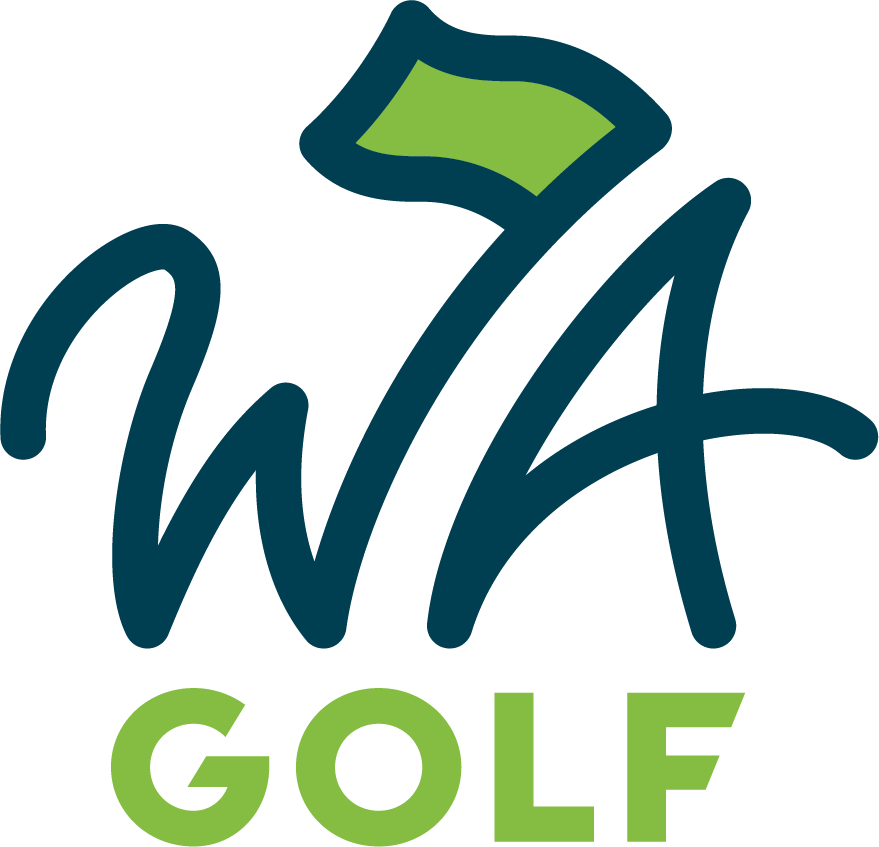by Martin Pool
The year 2015 marks the centennial of the opening of the Jefferson Park Golf Course on Beacon Hill in Seattle. Regarded as the first municipal golf course west of the Mississippi, Jefferson Park opened for play amid much pomp and ceremony on May 12, 1915.
It is generally accepted that golf as an organized sport began in 1888 in the United States with the founding of the St. Andrews Golf Club in Yonkers, New York. As golf grew more popular on the East Coast, it began to spread westward in the 1890s and the 1900s. In Washington State, Tacoma Golf Club came first, establishing itself in 1894. Seattle Golf Club came next in 1896, located first in Fremont, near Stone Way, then relocating to the Laurelhurst neighborhood in 1901, and finally to its present location in Richmond Beach in 1908.
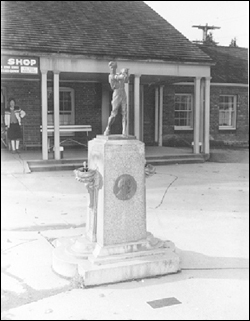
As golf’s popularity grew, public demand for an affordable place to play golf in Seattle grew as well. A resident in Seattle at the turn of the century who wished to play golf on a regular basis had precious few options, and in fact, only one option: join the Seattle Golf Club. But a country club membership was prohibitive, and inaccessible, for all but a few.
The origins of the Jefferson Park Golf Course can be traced back to 1907. Edward C. Cheasty, a member of the Board of Park Commissioners, is given credit for being the first to come up with the idea of a municipal golf course in Seattle. Not a golfer himself, but having traveled to many cities in the East and abroad, he was convinced that golf was good for the city and the public. He broached the subject with his fellow commissioners, but gained little support in the beginning.
Cheasty persisted and soon found an ally in Sherwood Gillespy (whose statue and fountain would welcome golfers to Jefferson Park for years thereafter). Gillespy, a prominent local businessman, collected and presented a petition from several thousand citizens urging the city to build a public golf course.
In 1909 the Seattle Board of Park Commissioners, under direction from the Seattle City Council, began in earnest to examine the possibility of building a public golf course in Seattle. The Park Board instructed the Olmsted Brothers, the nationally renowned consultants on urban parks development, and with whom the City had a contract, to determine the feasibility of a 9-hole golf links on the city-owned property on Beacon Hill. A year earlier, the city renamed this property from Beacon Hill Park to Jefferson Park, named after Thomas Jefferson. On the property was the City Stockade (to house criminals) and the City Hospital, then commonly referred to as the “Pest House” as it was intended for persons with contagious diseases. Both facilities were isolated from the population center of downtown for obvious reasons.
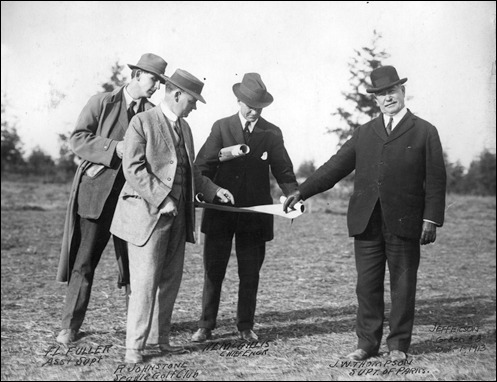
By February 1912, the Olmsted Brothers had presented to the Park Board a plan for a 9-hole course east of Beacon Avenue. Four months later, the Park Board had acquired an additional 40 acres from the city, and began to think in terms of 18 holes. By October 1912, the Park Board abandoned the 9-hole idea, and commissioned Robert Johnstone, the head professional at Seattle Golf Club, to design the course.
Robert Johnstone (1874 – 1937) was a transplanted Scotsman from North Berwick, Scotland. Joining the great influx of Scottish and English golf professionals who came to the United States at the turn of the century as golf became more and more popular, Johnstone first landed in San Francisco in 1900 and was the golf professional at the prestigious Presidio Golf Club from 1900 to 1905. While there he redesigned the Presidio course and the Ingleside Golf Course in Oakland. He was enticed to come to the Northwest where he remained the golf professional at the Seattle Golf Club from 1905 until his death in 1937. Among his other architectural accomplishments, he designed the Seattle Golf Club course, and in partnership with A. Vernon Macan, the Broadmoor Golf Club and Inglewood Golf Club. Much beloved and much admired, Johnstone defined golf professionalism and did more to define golf in the Puget Sound region during its early years than anyone else.
Construction of the golf course began in earnest in 1913. The Jefferson Park property had been logged off, but stumps and second growth timber was prevalent. Lacking budget appropriations, the city turned to its prisoners held on site at the stockade to provide much of the labor for “clearing and grubbing” the land. By the fall of 1914, much of the work had been completed but the Park Board decided to let the course mature and scheduled the opening for the following spring.
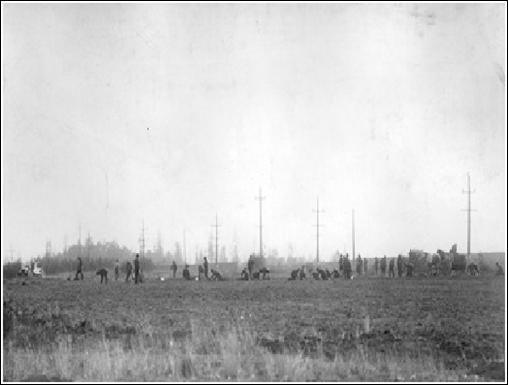
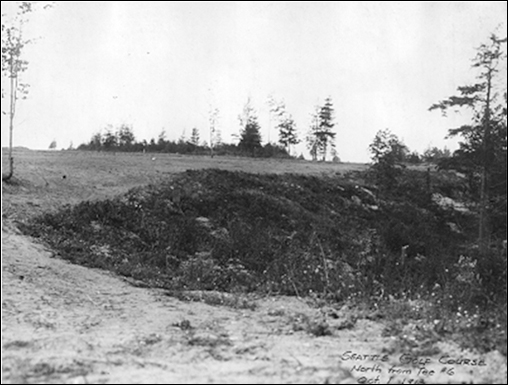
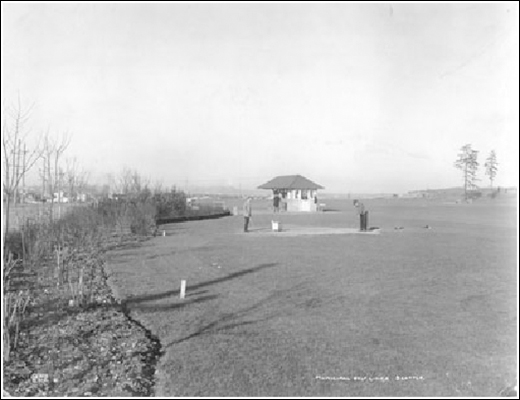
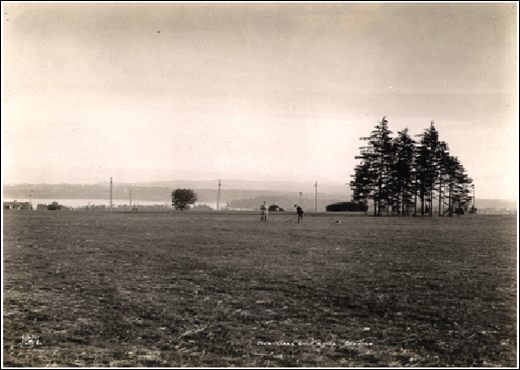
On May 12, 1915, the Municipal Golf Links at Jefferson Park officially opened for play. In the words of John H. Dreher, the golf reporter for The Seattle Times,
The Jefferson Park golf course on Beacon Hill, the city’s gift to its people, was formally opened yesterday afternoon with a dedicatory address and a half-midiron shot by Mayor Hiram Charles Gill. The speech was a dandy but the tee shot was a peach. The mayor never had a golf club in his hands before and, or yet, he got a good, 100-yard drive.
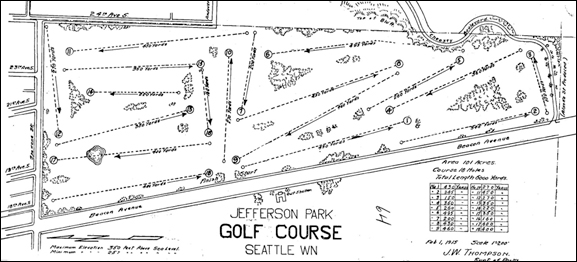
Sadly, the two men who were most responsible for bringing municipal golf to Seattle were not there to see the opening drive. Sherwood Gillespy died in 1912 and Edward C. Cheasty in 1914.
The initial course layout measured exactly 6,000 yards. The following diagram, dated Feb. 1, 1915, incorrectly shows the pond located on the 17th hole. The pond was actually located on what was then the 13th hole, but is now the 15th hole.
Almost immediately the course began to be modified, and by 1916, while the routing of the holes remained the same, the yardages on all but two holes had been changed. The new yardages measured 6,095 yards, rated a par 73 and bogey 81 (the term “bogey” had somewhat different meaning then than it does today).
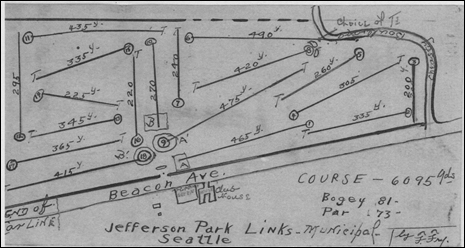
Holes 1 – 5 remain pretty much the same today as it was then.
Hole 6 was par-5 with the tee next to the No. 5 green, driving over the gully, and finishing near today’s tee box on No. 11. (Note the “Choice of Ts”)
Hole 7 was a 240-yard par-3.
Holes 8 – 11 were much the same as today.
Hole 12 was a 295-yard par-4 with the green located where the 15th green is today.
Hole 13 then is now hole 15.
Hole 14 is the same as today but much shorter at 225 yards, par-3.
Hole 15 then is now Hole 13.
Holes 16 – 18 remain nearly the same as today.
Fees were set. A round of golf cost 25 cents. An annual pass, with locker and clubhouse privileges, could be purchased for $12. Caddies, typically boys aged 12-16 years, earned 50 cents for the loop. A golf lesson from the pro? $1.
The Park Board hired Jefferson Park’s first golf professional in 1915, and by sheer coincidence, he shared the same name as the golf course itself. His name was Joseph Jefferson. Born in Newbiggin-by-the-Sea, England, Joe Jefferson came from a family of golf professionals and emigrated with his brothers Phil and William, first to Canada and then to the U.S. Many Jeffersons have worked as golf professionals in the Seattle area. Joe Jefferson lived on site at the golf course and worked there for 29 years, retiring in 1944.
Two days after the golf course was opened, the Park Board faced its first controversy. Miss Lena Colsky, an employee of the Dexter Horton National Bank, responding to the Board’s policy on restricting women from playing on weekends, protested. On May 14, 1915, she wrote:
I am of the opinion that women, who are unable to avail themselves of the opportunity of playing golf week days, should be allowed the privilege of playing Saturday afternoons and Sundays. If this is to be a Municipal Golf links I can’t see why a woman’s $12 a year for the up-keep is not good as a man’s and why they shouldn’t be given the same consideration.
Miss Colsky’s impeccable logic was not lost upon the Board, which, to its credit, sent her this reply dated June 3, 1915:
I wish to notify you that acting upon the protest which you initiated and which was joined in by others, the Board has voted to rescind the rule whereby women were prevented from using the Municipal Golf Course at Jefferson Park, Saturday afternoons and Sunday mornings, and hereafter the course will be open to women at all times.
Women golfers at Jefferson Park, fewer in number than men to be sure, were an enthusiastic lot. One account tells of a week in December, 1919 when a hard freeze set upon Seattle:
That was the coldest December weather of thirty years’ record in Seattle. Play stopped on December 11, 12, 13, 15, 16, and 17. “Why not December 14?” some will ask. There’s an amusing circumstance about that date. It was just as cold, although clear, that day as any of the other days of the week grouped about it, but one golfer played that day. A woman! (Seattle Sunday Times, January 4, 1920)
Her name is not given, but one wonders if it was not Miss Lena Colsky herself.
The public’s response to the opening of Jefferson Park was immediate and astounding. Over 26,000 players played in the seven and a half months remaining in1915, and reached nearly 50,000 in 1916. It hit the 100,000 mark in 1922 and after the third nine (the “long nine” at that time as it was a regulation 3,100 yards) was completed in 1923, attendance reached an astonishing 174,000 players in 1926. According to a June 6, 1926 Times article:
The average Sunday sees 200 men and women turn away from Jefferson Park because they cannot be accommodated. This is not only during the summer playground period, but it has been a fact since January 1, 1926. A thousand persons a day is a lot of persons to be taken care of on one day, and that is about what turns out every Sunday to the Beacon Hill golfing area. One thousand a day for twenty-seven holes is the saturation point.
Golf’s popularity, and congestion, at Jefferson Park led in part to the building of Rainier Golf and Country Club and Inglewood Golf Club in the early 1920s and spurred on the construction of Jackson Park Golf Course (named after President Andrew Jackson), the second municipal course in Seattle, completed in 1930.
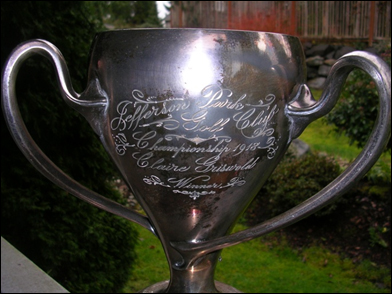
Some two and a half years after the opening of the golf course, the Jefferson Park Golf Club was formally organized in December, 1917. Initially, women were excluded from joining the club, but in February, 1920, the bylaws were changed to include women. Immediately nine women joined and created the women’s division and by the following year, the club had 220 members: 195 men and 25 women. Typical of the time, most of the tournament schedules of the club involved match play competition among the clubs in the Puget Sound area. Frequent matches were held with Meadow Park Golf Club in Tacoma, which also celebrates its centennial in 2015.
The first Jefferson Park Club Championship was held in the summer of 1918. In a 36-hole final match, Claire Griswold, matching his opponent’s score of 72 in the first 18, went on to defeat Lee Steil by a margin of 5 and 4. Phenomenal scoring considering they were using wood-shafted hickory clubs!
Griswold and Steil, along with Clark Spiers and Bon Stein, who collectively became known as “The Big Four” from Jefferson Park, all former caddies at the Seattle Golf Club, and all protégés of Robert Johnstone, dominated amateur golf for many years in the Pacific Northwest.
Throughout the early beginnings of Jefferson Park Golf Course, it received high praise from many sources for its beauty and its layout. The great Walter Hagen played an exhibition match at Jefferson Park on November 19, 1922 and of Jefferson Park, he wrote:
I want to go on record right at this point by saying that I have visited forty-eight of the four dozen states of this Union and have played on every municipal links in those states, as far as I know, and, to my way of thinking, there is nothing on the face of this broad land in municipal golf links that compares with the Seattle city course, on which we played yesterday.
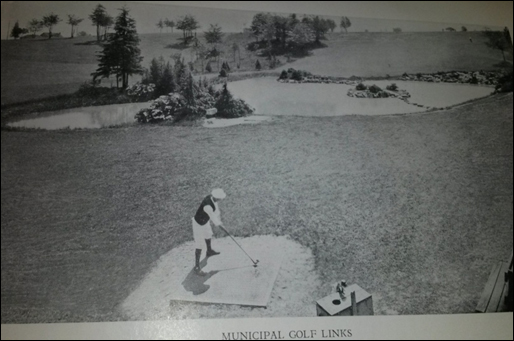
Happy centennial anniversary Jefferson Park!
On Saturday, May 9, 2015, the Northwest Hickory Players will celebrate Jefferson Park’s centennial by hosting a hickory club event starting at noon at the course. The public is invited and rental hickory sets will be available. Dress in period clothes and play a round of golf as it was played a hundred years ago! Contact Martin Pool at [email protected] for more information.

